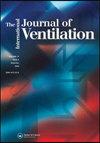Dynamic performance of displacement ventilation in a lecture hall
IF 1.5
4区 工程技术
Q3 CONSTRUCTION & BUILDING TECHNOLOGY
引用次数: 4
Abstract
Abstract An accurate temperature gradient calculation is essential for displacement ventilation (DV) system design since it directly relates to thecalculation of the required supply airflow rate. Inaccurate temperature prediction can cause poor thermal comfort and wrong sizing of the ventilation and cooling systems. A heat balance-based method is usually applied in displacement ventilation (DV) design when overheating is the primary indoor climate concern. The temperature gradient in DV systems is usually calculated with lumped-parameter nodal models. Several simplified nodal models were developed and implemented in the various building simulation software to estimate the temperature stratification in rooms with DV. Recent studies reveal that the multi-nodal models provide the most accurate temperature gradient prediction. However, the majority of dynamic calculation methods assumes either complete mixing of zone air or linearised temperature gradient. The present study introduces the dynamic temperature gradient model for DV and investigates the effect of thermal mass on the temperature stratification. The model was validated with the experimental results of a lecture room with displacement ventilation. The room air temperature measurements were conducted during three weeks at 20 different heights. The supply air temperature and occupancy rate were recorded during each scheduled lecture. The developed dynamic nodal model is able to calculate the air temperatures in the occupied zone accurately. The effect of the thermal mass and changing heat gains on the room air temperature stratification is analysed for the lecture room with DV.报告厅置换通风的动态性能研究
准确的温度梯度计算是置换通风(DV)系统设计的关键,因为它直接关系到所需送风流量的计算。不准确的温度预测会导致热舒适性差,通风和冷却系统的尺寸错误。当过热是室内气候的主要问题时,通常采用基于热平衡的方法进行置换通风(DV)设计。DV系统的温度梯度通常采用集总参数节点模型计算。开发了几种简化的节点模型,并在各种建筑仿真软件中实现,以估计DV房间的温度分层。近年来的研究表明,多节点模型提供了最准确的温度梯度预测。然而,大多数动态计算方法要么假定区域空气完全混合,要么假定温度梯度线性化。本文引入了DV的动态温度梯度模型,探讨了热质量对温度分层的影响。用置换通风教室的实验结果对模型进行了验证。室内空气温度测量是在三个星期内在20个不同的高度进行的。在每次预定的讲座中记录送风温度和入住率。所建立的动态节点模型能够准确地计算出被占领区域内的空气温度。分析了热质量和变热增益对DV教室室内空气温度分层的影响。
本文章由计算机程序翻译,如有差异,请以英文原文为准。
求助全文
约1分钟内获得全文
求助全文
来源期刊

International Journal of Ventilation
CONSTRUCTION & BUILDING TECHNOLOGY-ENERGY & FUELS
CiteScore
3.50
自引率
6.70%
发文量
7
审稿时长
>12 weeks
期刊介绍:
This is a peer reviewed journal aimed at providing the latest information on research and application.
Topics include:
• New ideas concerned with the development or application of ventilation;
• Validated case studies demonstrating the performance of ventilation strategies;
• Information on needs and solutions for specific building types including: offices, dwellings, schools, hospitals, parking garages, urban buildings and recreational buildings etc;
• Developments in numerical methods;
• Measurement techniques;
• Related issues in which the impact of ventilation plays an important role (e.g. the interaction of ventilation with air quality, health and comfort);
• Energy issues related to ventilation (e.g. low energy systems, ventilation heating and cooling loss);
• Driving forces (weather data, fan performance etc).
 求助内容:
求助内容: 应助结果提醒方式:
应助结果提醒方式:


